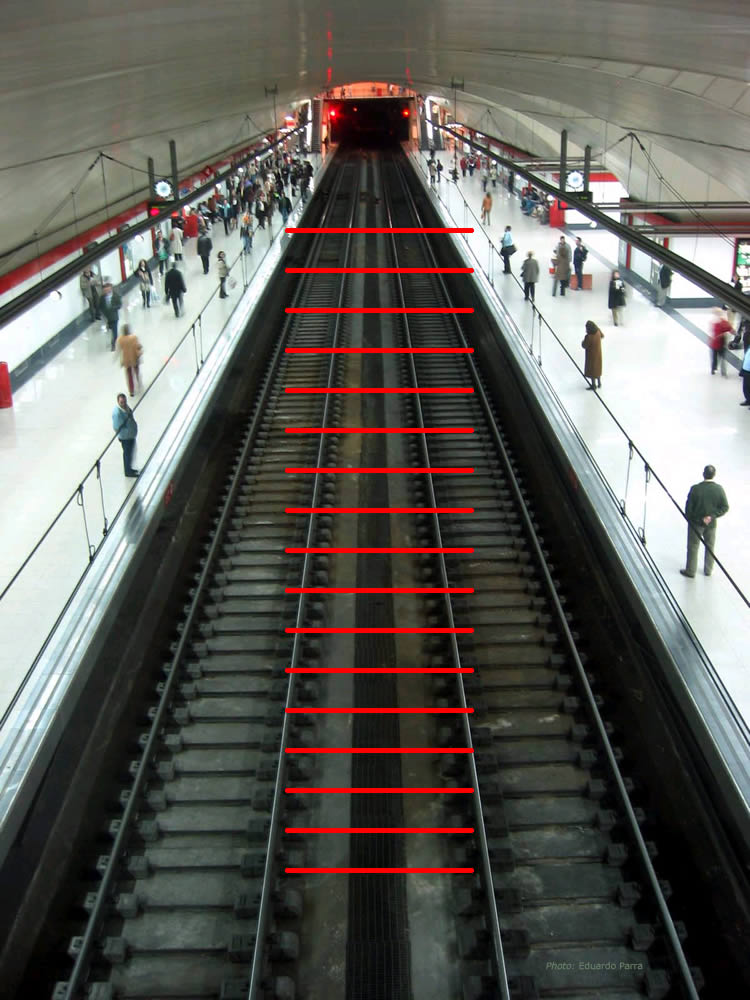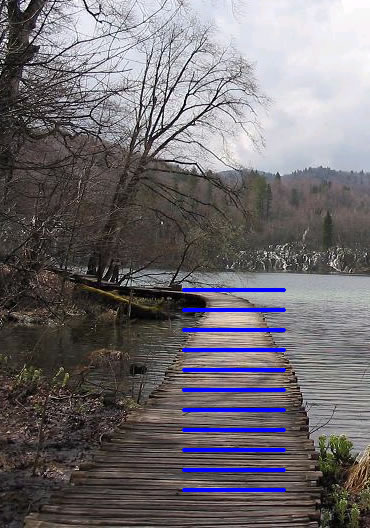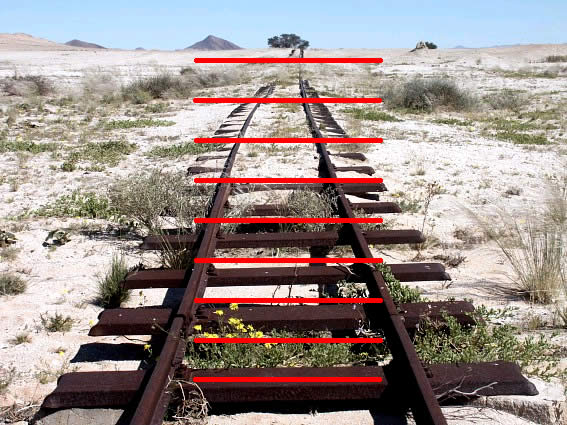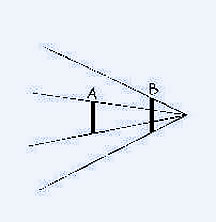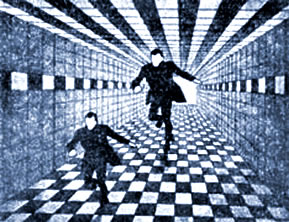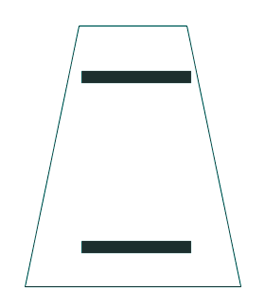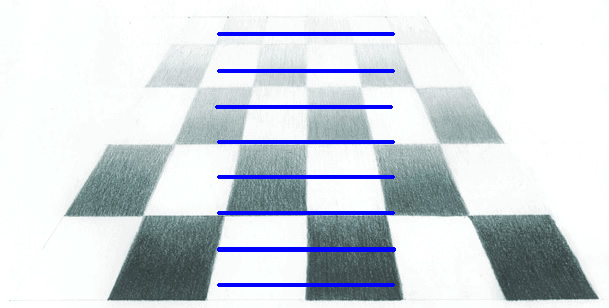| OPTICAL
ILLUSION and FOCUSES -> Home |
|
Ponzo
optical illusion
The
Ponzo illusion is an optical illusion where a pair of converging lines distorts
the perception of two identically sized lines. Like most visual and perceptual
illusions, the Ponzo illusion helps neuroscientists study the way the brain
and visual system perceive and interpret images. Artists have also utilized
the illusion to great effect in their works.
The Ponzo illusion is often illustrated with two converging lines that mimic
railroad tracks disappearing into the distance. Two horizontal lines or
bars are placed across these "tracks," one higher than the other.
When looking at the image, viewers routinely see the upper bar (where the
converging lines are closer) as larger than the lower bar. In reality, the
two bars are of identical size.
|
|
Ponzo optical illusion |
| Mario
Ponzo (Milano, 23 June 1882 – Torino, 9 January 1960), Italian
psychologist
Mario
Ponzo was an Italian academic psychologist. He was born in Rome
and studied under Federico Kiesow at Turin where, in 1911, he published
an article in the journal Archives Italiennes de Biologie which
presented the well-known optical illusion known as the Ponzo illusion.
In the same year he wrote for the Atti della Regia Accademia delle
Scienze di Torino what has been described as the first article in
Italian on psychology and the cinema. In 1931 he succeeded Sante
De Sanctis to the chair in psychology at the Universita degli studi
di Roma "La Sapienza". |
|
| |
| |
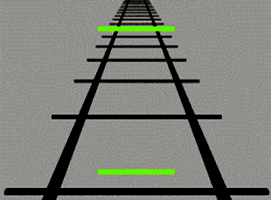 |
Explanation
of the Ponzo illusion
The
effect of the Ponzo illusion is often attributed to linear perspective.
The upper line looks longer because we interpret the converging
sides as parallel lines receding into the distance. In this
context, we interpret the upper line as though it were farther
away, so we see it as longer. In the three dimensional world,
an object located farther away would have to be larger than
a nearby object for both to produce retinal images of the same
size. This explanation is often referred to as the perspective
hypothesis.
The more visual cues present surrounding the two horizontal
lines, the more powerful the illusion. The framing effect, where
objects that appear to fill an enclosing border appear larger
than the same object surrounded by a larger frame, also contributes
to the illusion. The difference in the separation or gap of
the horizontal lines from the framing converging lines helps
to create the sense that the upper bar, which is closer to the
bordering lines, is larger than the lower one. Interestingly
enough, the Ponzo illusion also appears to be present in other
species. Studies have show that pigeons, rhesus monkeys, and
chimpanzees all perceive the Ponzo illusion, although the relative
strength of various contributing factors like figure orientation
was different among each species. |
|
|
|
|
| |
|
|
| |
|
|
REFERENCES
Visual Phenomena & Optical Illusions:
• Brislin, R. W. (1974). The Ponzo
illusion: Additional cues, age orientation and culture. Journal of
Cross-Cultural Psychology, 5, 139-161.
• Diaz, L. F., & Delay, E.
R. (1992). Response confidence and the Ponzo illusion. Perceptual
and Motor Skills, 74, 265-266.
• Renier L, C. Laloyaux, O. Collignon,
D. Tranduy, A. Vanlierde, R. Bruyer, and De Volder A.G. 2005. "The
Ponzo illusion using auditory substitution of vision in sighted and
early blind subjects" Perception, 34:857–867.
• Robinson, J. O. The Psychology
of Visual Illusion. Dover Publications, 1998.
• Fineman, Mark. The Nature of
Visual Illusion. Dover Publications, 1996.
• Renier L, De Volder A.G. 2005.
"Cognitive and brain mechanisms in sensory substitution of vision:
a contribution to the study of human perception" Journal of Integrative
Neuroscience, Special Edition in Honor of Paul Bach-y-Rita, 4:489-503.
|
|
|
 |
Copyright
© 2004 abc-people.com
Design and conception BeStudio © 2016-2023 |
|
|
|
|
|
|
|
